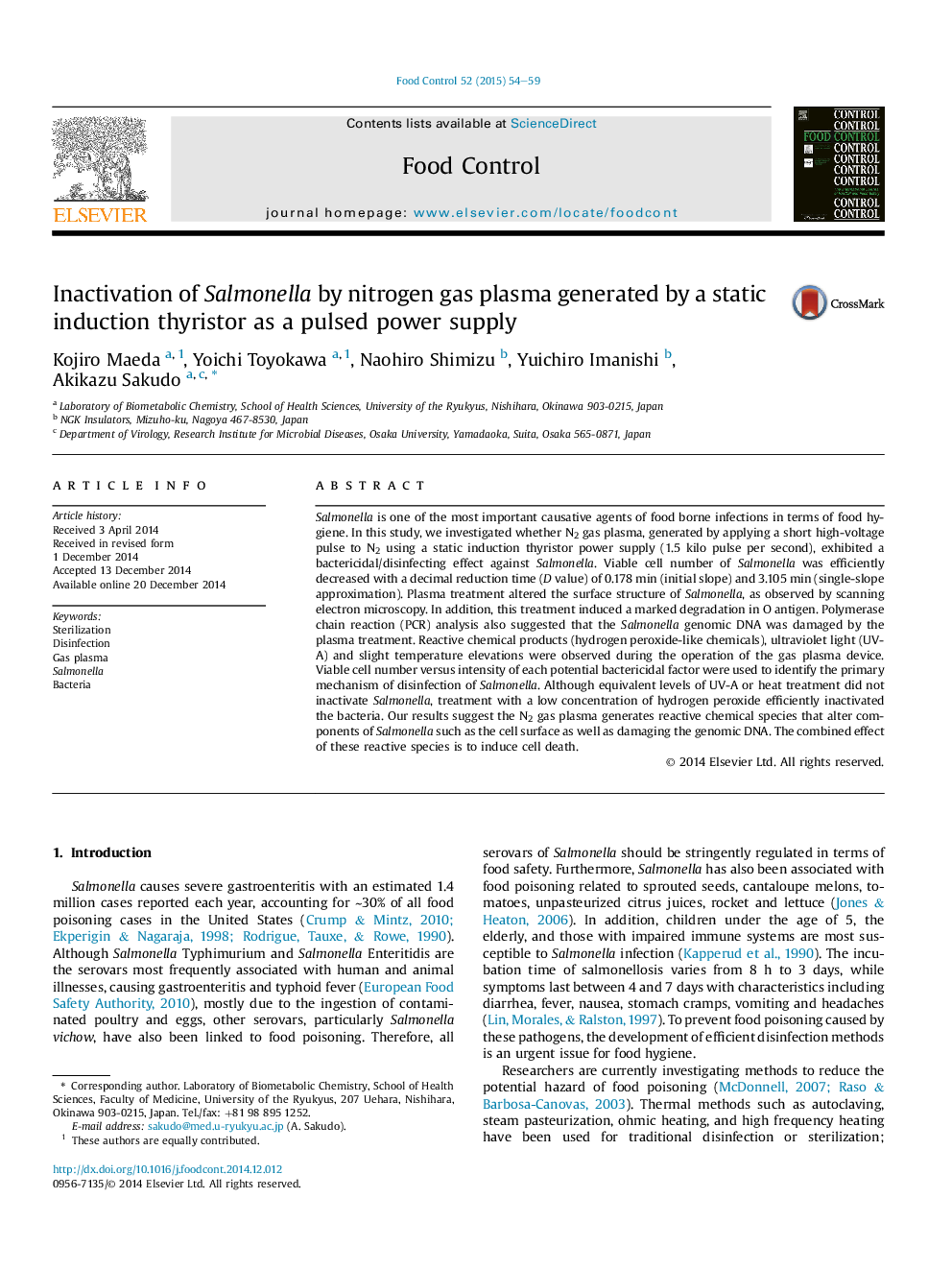| کد مقاله | کد نشریه | سال انتشار | مقاله انگلیسی | نسخه تمام متن |
|---|---|---|---|---|
| 4559248 | 1628410 | 2015 | 6 صفحه PDF | دانلود رایگان |
• The bactericidal effect and biochemical change of Salmonella induced by N2 gas plasma treatment was analyzed.
• Reactive chemical products produced during N2 gas plasma treatment constitute the main inactivation factor.
• Efficient disinfection accompanied by changes to the morphology and cell surface of Salmonella was observed.
Salmonella is one of the most important causative agents of food borne infections in terms of food hygiene. In this study, we investigated whether N2 gas plasma, generated by applying a short high-voltage pulse to N2 using a static induction thyristor power supply (1.5 kilo pulse per second), exhibited a bactericidal/disinfecting effect against Salmonella. Viable cell number of Salmonella was efficiently decreased with a decimal reduction time (D value) of 0.178 min (initial slope) and 3.105 min (single-slope approximation). Plasma treatment altered the surface structure of Salmonella, as observed by scanning electron microscopy. In addition, this treatment induced a marked degradation in O antigen. Polymerase chain reaction (PCR) analysis also suggested that the Salmonella genomic DNA was damaged by the plasma treatment. Reactive chemical products (hydrogen peroxide-like chemicals), ultraviolet light (UV-A) and slight temperature elevations were observed during the operation of the gas plasma device. Viable cell number versus intensity of each potential bactericidal factor were used to identify the primary mechanism of disinfection of Salmonella. Although equivalent levels of UV-A or heat treatment did not inactivate Salmonella, treatment with a low concentration of hydrogen peroxide efficiently inactivated the bacteria. Our results suggest the N2 gas plasma generates reactive chemical species that alter components of Salmonella such as the cell surface as well as damaging the genomic DNA. The combined effect of these reactive species is to induce cell death.
Journal: Food Control - Volume 52, June 2015, Pages 54–59
